7 million people a year can’t be wrong. The Eiffel Tower is one of the world’s most visited and most recognizable landmarks as the ‘Iron Lady’ attracts people from across the globe to France’s bustling capital, Paris. But beyond ‘La Dame de Fer’ and even beyond the City of Lights, Paris, itself what are some of the most iconic French landmarks?
We asked some leading travel bloggers and explorers to tell us about their favourite French landmarks and buildings, so read on to be inspired to visit the land of croissants, good red wine and a bit of romance…
Skip ahead
Top 10 Famous French Landmarks
So the list could stretch as long as my arm, and we had to cap this list at 20 landmarks. That said, we wanted to also count down what we think is the ‘top 10’ most famous landmarks in the country. In no particular order, we’d argue they are:
- Eiffel Tower
- The Louvre
- Pont du Gard
- Château de Versailles / Palace of Versailles
- Mont St Michel
- Château de Fontainebleau
- Montblanc
- Sacré-Cœur
- Arc de Triomphe
- Notre Dame
Eiffel Tower, Paris
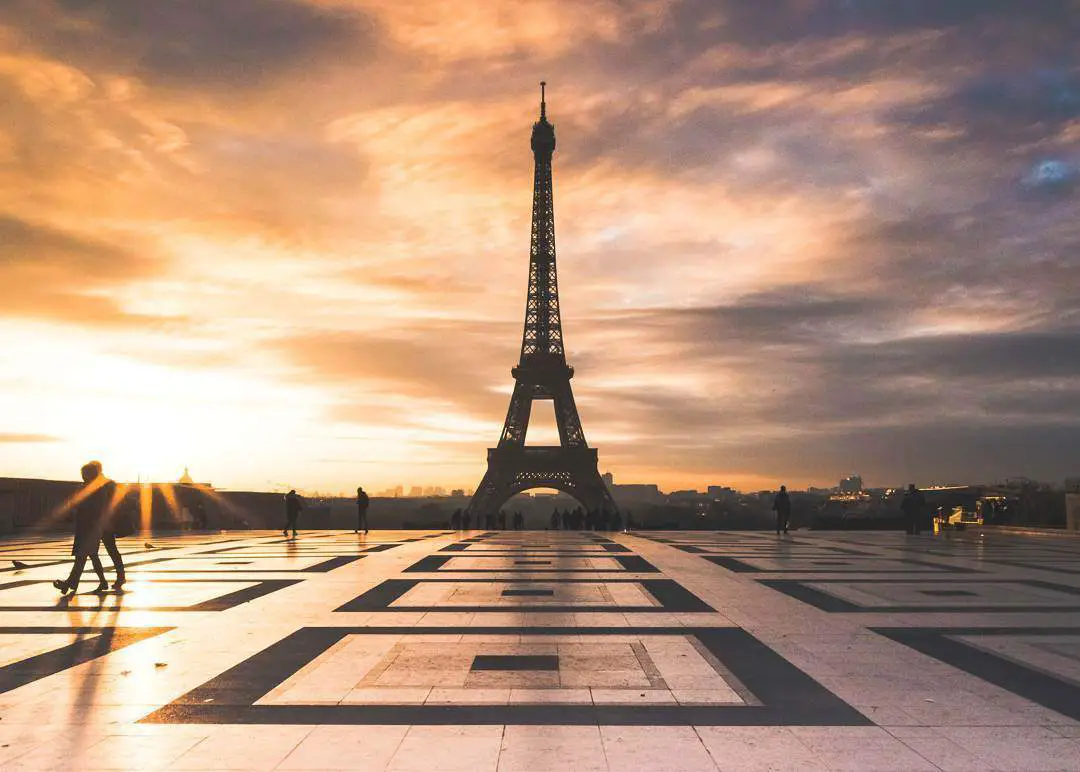
Explored by Nesrine from Kevmrc
Talking about iconic buildings in France? Well, let’s introduce the most famous monument of France: the Eiffel Tower! Located in Paris, the Eiffel Tower was built in 1889 by the engineer Gustave Eiffel.
But did you know the building suffered from fierce criticism in its early days? Indeed, many artists of the time protested its construction because they were afraid it would denature the landscape. Nowadays, the Eiffel Tower is one of the most visited monuments in the world with more than 7 million visitors every year.
Yes, the Eiffel Tower attracts a lot of people, and it can be difficult to enjoy it without queuing for a long time. But here are a few tips to have the best experience of the Eiffel Tower.
- Avoid waiting for 2 hours by booking your tickets online, in advance.
- Try to go for sunset! The view from the Eiffel Tower is simply incredible…
- Consider using the stairs, it’s much faster than queuing for the lifts, you can enjoy the view and exercise as well!
Entering the Eiffel Tower is of course a must-do, but beholding the Eiffel Tower is also one of the best things to do in Paris! Here are some of the best spots to enjoy views of the Eiffel Tower.
Read next: What are the best souvenirs to buy in Paris?
Pont du Gard, Southern France
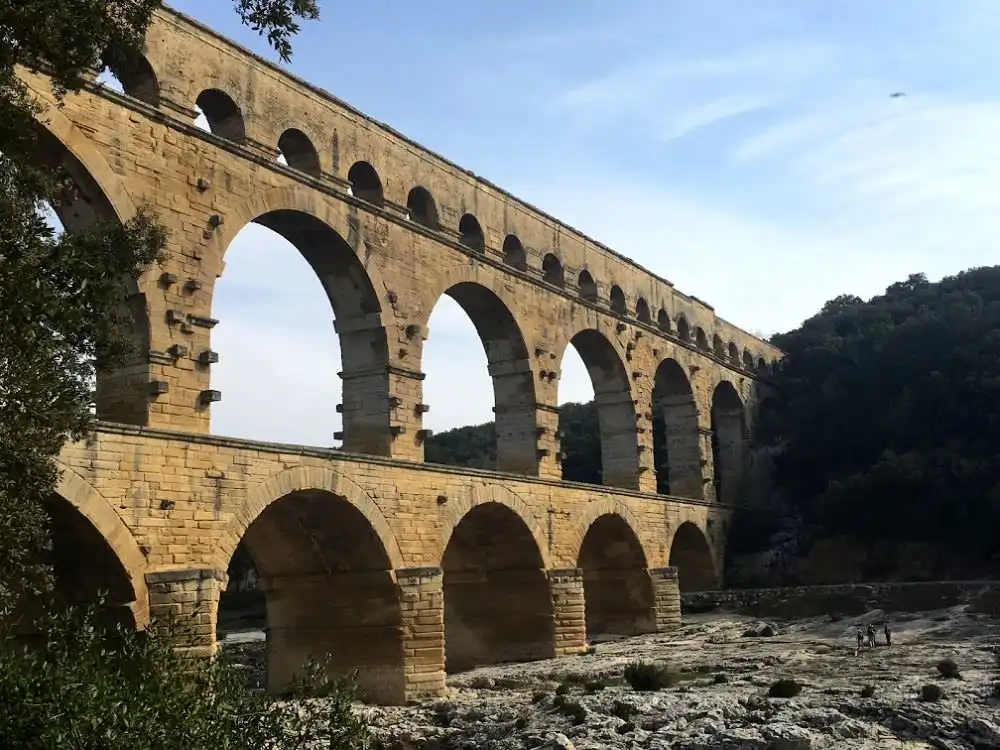
Explored by Gillian from Bucket List France
The Pont du Gard, located in the south of France, is an amazing feat of engineering that was built by the Romans some 2000 years ago. This three-tiered aqueduct was constructed in order to supply the city of Nimes with fresh water. Despite being purely designed for function rather than beauty, the architecture and workmanship is seriously remarkable.
First, there is the sheer size of the structure, 275 metres long and 49 metres high. Then, there are the three distinctive symmetrical layers, each with a different size of classical arch, all perfectly proportioned and finely sculptured from local limestone.
The best part for me, however, is that this is a monument that you can get close to. You can actually reach out and touch the stone, study the perfection of the joints and easily imagine the scene 2000 years ago when it rose from the ground. Despite being listed as a UNESCO World Heritage site in 1985, cars were still allowed to drive across the aqueduct until 1996! Nowadays, it’s a far more organized affair with various options of tickets and guided tours. As you can imagine, it gets very busy in the summer months so consider visiting during the shoulder season.
If you are interested in finding out a little more about the history of this place, then visit the excellent information centre located adjacent to the bridge. There are some great interactive displays for kids and a short informative movie.
Think you know your landmarks? Then why not check out these famous landmark quiz questions.
Château de Versailles / Palace of Versailles, Versailles
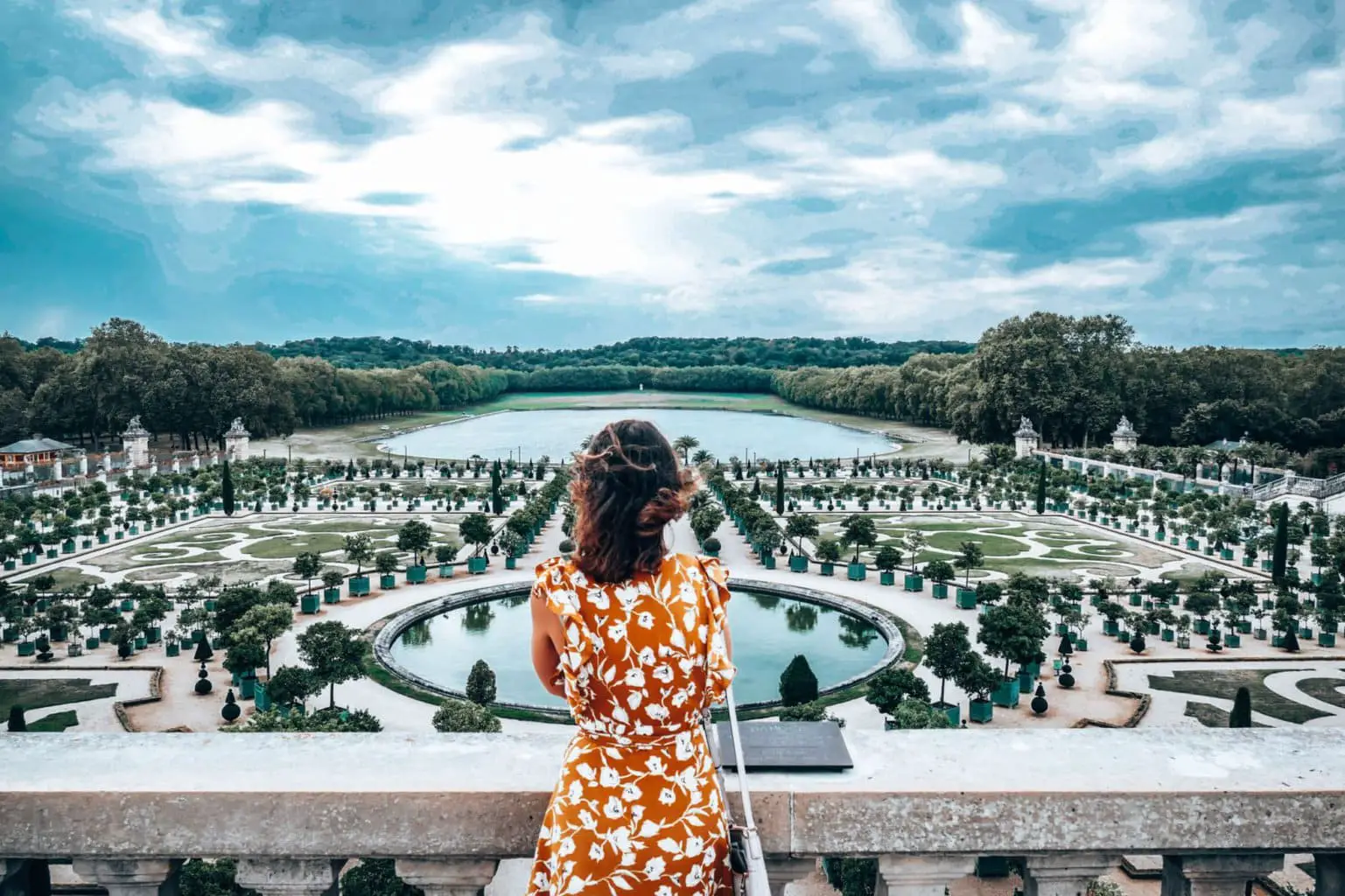
Explored by Elisa from World in Paris
One of my favourite places in France is the Château de Versailles. Visiting Versailles is a must for history lovers. Versailles was the royal palace of the last French Kings, from King Louis XIV to King Louis XVI. Also, it is a jewel of French baroque architecture, with amazing rooms and halls, like the famous Hall of Mirrors.
Versailles is also well worth the visit for the fantastic gardens surrounding the Palace. The green areas closer to the Palace are French-style gardens, adorned with fountains, grooves, and classical sculptures while the rest of the estate is a forest. The forest is always free to visit and it is a very popular place to go amongst locals, especially when the weather is good.
The forest is dominated by the Grand Canal, which was used in the past for naval battles for the king’s entertainment. Today, it is possible to sail the Grand Canal on a rowboat.
Versailles is an easy day trip by train from Paris. We recommend buying skip the line tickets as the lines to enter the Palace are always insane.
The Louvre, Paris
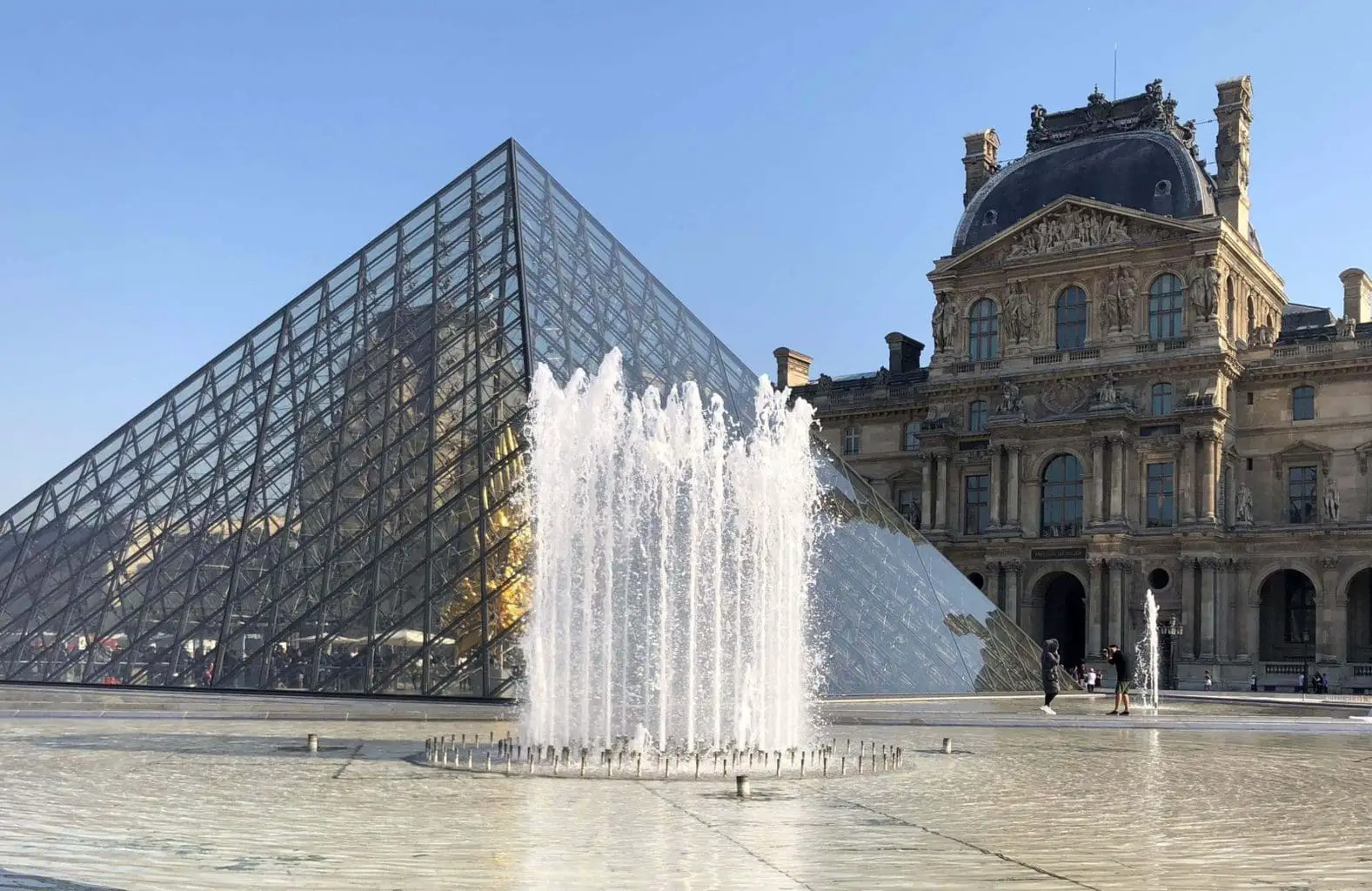
Explored by Catherine from We Go With Kids
The Louvre is not only the world’s largest and most visited art museum, but it is also an iconic landmark. The museum is housed in the Louvre Palace, which dates back to the 12th century and was expanded and renovated many times. The world-famous Louvre Pyramid was designed by I.M. Pei and completed in 1989 to accommodate the increasing number of daily visitors.
The Louvre’s collection includes the Mona Lisa, the Venus de Milo and Winged Victory of Samothrace and also seemingly endless galleries that typically display about 35,000 art works. When we visited the Louvre with kids, we found that the renowned art museum was surprisingly child-friendly. Families traveling with a child in a stroller are ushered straight through to the entrance, but all other visitors should purchase skip the line tickets.
We recommend arriving early or late and to be prepared for the unbelievable paparazzi swarming the Mona Lisa, which is much smaller than you would expect.
Recommended: What are the best US landmarks?
Notre Dame, Paris
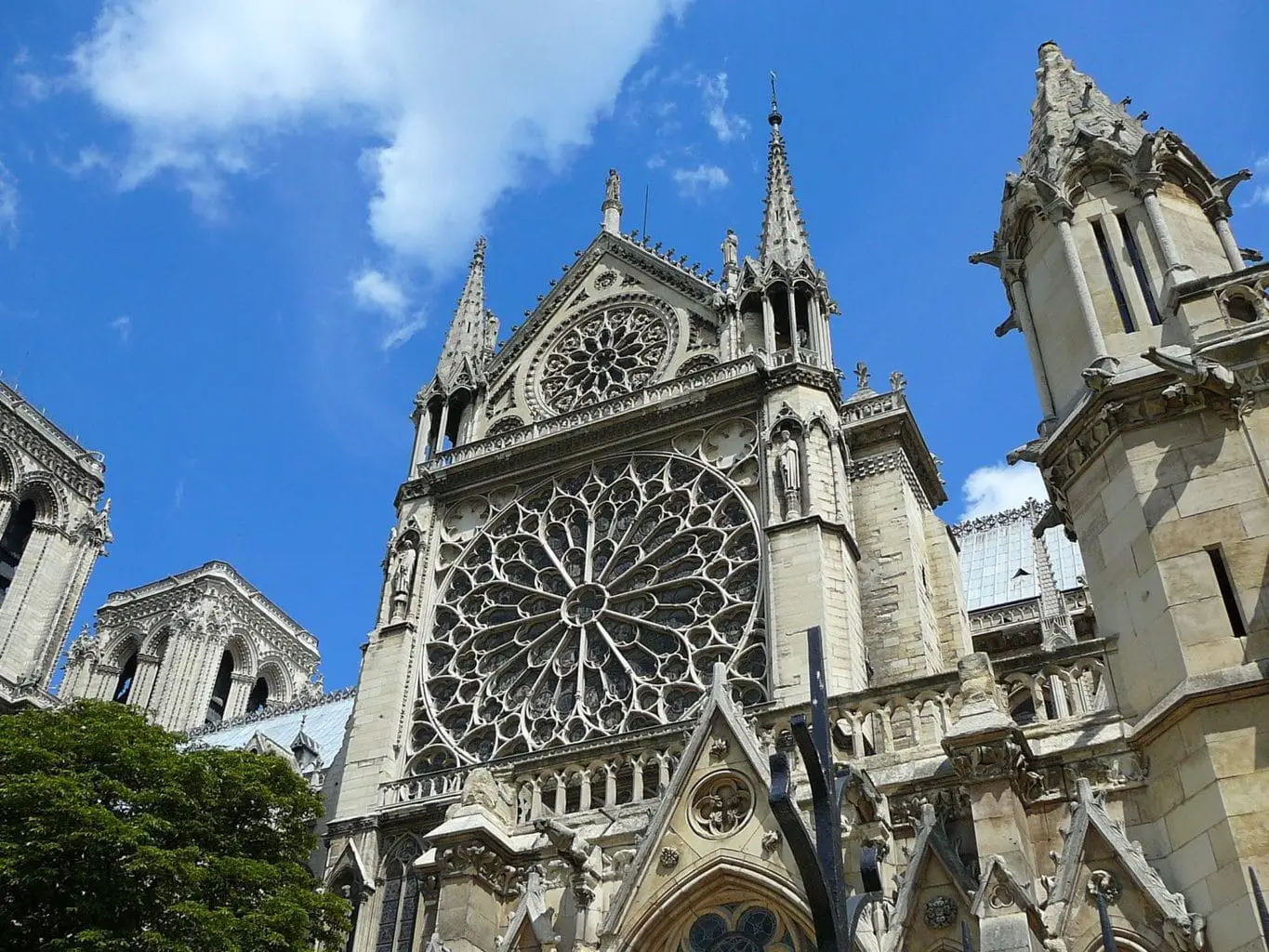
Explored by Holly from Globe Blogging
Parisian buildings don’t come much more iconic than Notre Dame Cathedral.
Dating back to medieval times, the front visage of Catholic cathedral is recognizable all over the world, but a walk around the grounds offers unique vantage points for capturing what are exceptional examples of gothic architecture, from the gargoyles keeping a stern watch over the cathedral, to the row upon row of stained glass within the cathedral itself.
In 2019, ongoing renovations within the cathedral resulted in a fire in the main roof of the building, destroying both the spire and the beams supporting the roof.
The worldwide outpouring of dismay demonstrates the iconic status of this building. The French president has promised Notre Dame will be restored and after some controversy the French government passed a law requiring the Cathedral be rebuilt exactly as it was.
Check out what landmarks make the list of ultimate must-see attractions in South America.
Château de Chambord, Loire Valley
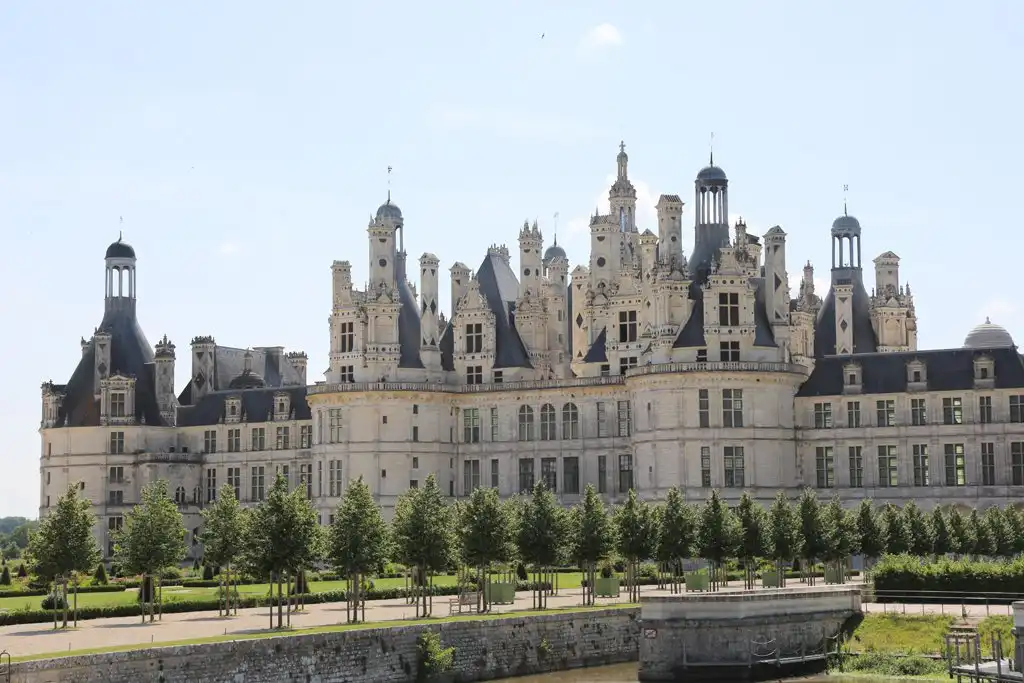
Explored by Norbert from France Bucket List
Château de Chambord is one of the most beautiful castles in France to visit. It is also one of the most impressive, it is really huge!
Chambord is located in the Loire Valley, in the French region of Centre-Val de Loire, and together with Chenonceau and Chaumont is one of the best Loire Castles.
In Chambord, there is a castle since medieval times. The current castle, however, was built by King François I in a Renaissance style. This castle was not the King’s permanent residence but a castle for his hunting days. It is possible that Leonardo da Vinci influenced the château’s design. Indeed, during the construction works Leonardo was living in Amboise and King François I was his patron.
Chambord’s main highlight is the central double-spiral staircase, it is really amazing! We also enjoyed a stroll around the gardens and forest. The château is located in the heart of the biggest closed forest in Europe (around 50 km2 surrounded by a 32-km wall).
The best way to visit Chambord is by joining a guided tour from Paris. It is also popular to visit the Loire castles by bike, the area is totally flat and very popular amongst cyclists.
Related: Need a quote to accompany that awesome photo of that Paris Landmark? Then why not check out this list of best Paris Quotes.
Arc de Triomphe, Paris

Explored by James from The Travel Scribes
It’s one of the most Instagrammable places in Paris but, more than that, the Arc de Triomphe is one of the most recognised buildings in the world.
Completed in 1836, it was dedicated to the armies of the French Revolution; those who had fought for France as the names of all the French victories and generals are inscribed on it. It also houses the tomb of an unknown soldier from World War I, under its vault.
Most visitors just visit the ground level of the arch but you can climb to the top, courtesy of 284 stairs or an elevator plus 64 stairs. There is a fee to be paid although there are certain days of the year where it’s free, or it can be accessed as part of a Paris Explorer Pass.
One thing to keep in mind? Be careful when crossing the roads! The traffic around the Arc de Triomphe is absolutely manic (trust me – I drove in it), and pedestrians need to be careful when walking in the area.
Related: Take a look at what made the ulimate list of Croatia landmarks to add to your bucket list.
Mont St Michel, near Normandy
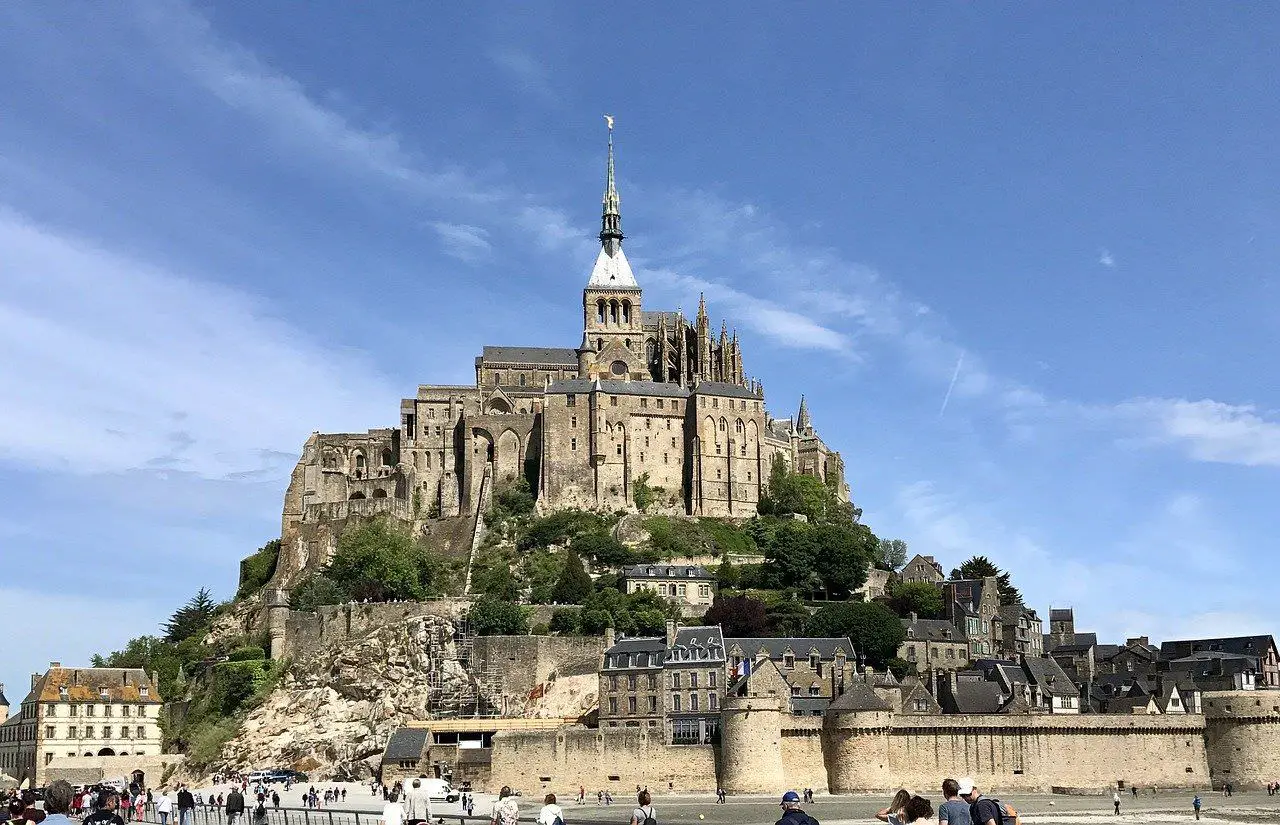
Explored by Wendy from The Nomadic Vegan
The abbey on top of Mont St Michel has to be the most spectacularly located abbey in all of France.
Perched on a small, rocky island that lies just off the Normandy coast, this Benedictine abbey has stood as a sentinel watching over the coastline for centuries. And indeed, certain militaristic features of its architecture hint at the fact that it served not only as a place of worship but also as a citadel. English soldiers attempted to lay siege to the abbey a number of times during the Hundred Years’ War, but they never managed to conquer it.
Over time, the rest of the small island became covered by the buildings of a medieval town that grew up around the abbey. A well-trodden pilgrimage trail led to the abbey and was the second most important pilgrimage route in Europe after the Camino de Santiago that runs across Spain.
Now, people still come here from all over the world, not necessarily for religious reasons, but just to marvel at this unique architectural ensemble, which was declared to be a UNESCO World Heritage Site in 1979. In recent decades, the water around Mont St Michel has silted up so much that at low tide it’s no longer an island. Local initiatives are working hard to reverse this process and ensure that Mont St Michel retains its unique character that has made it so famous.
Read next: The most incredible landmarks in Italy.
Palais Garnier Opera House, Paris
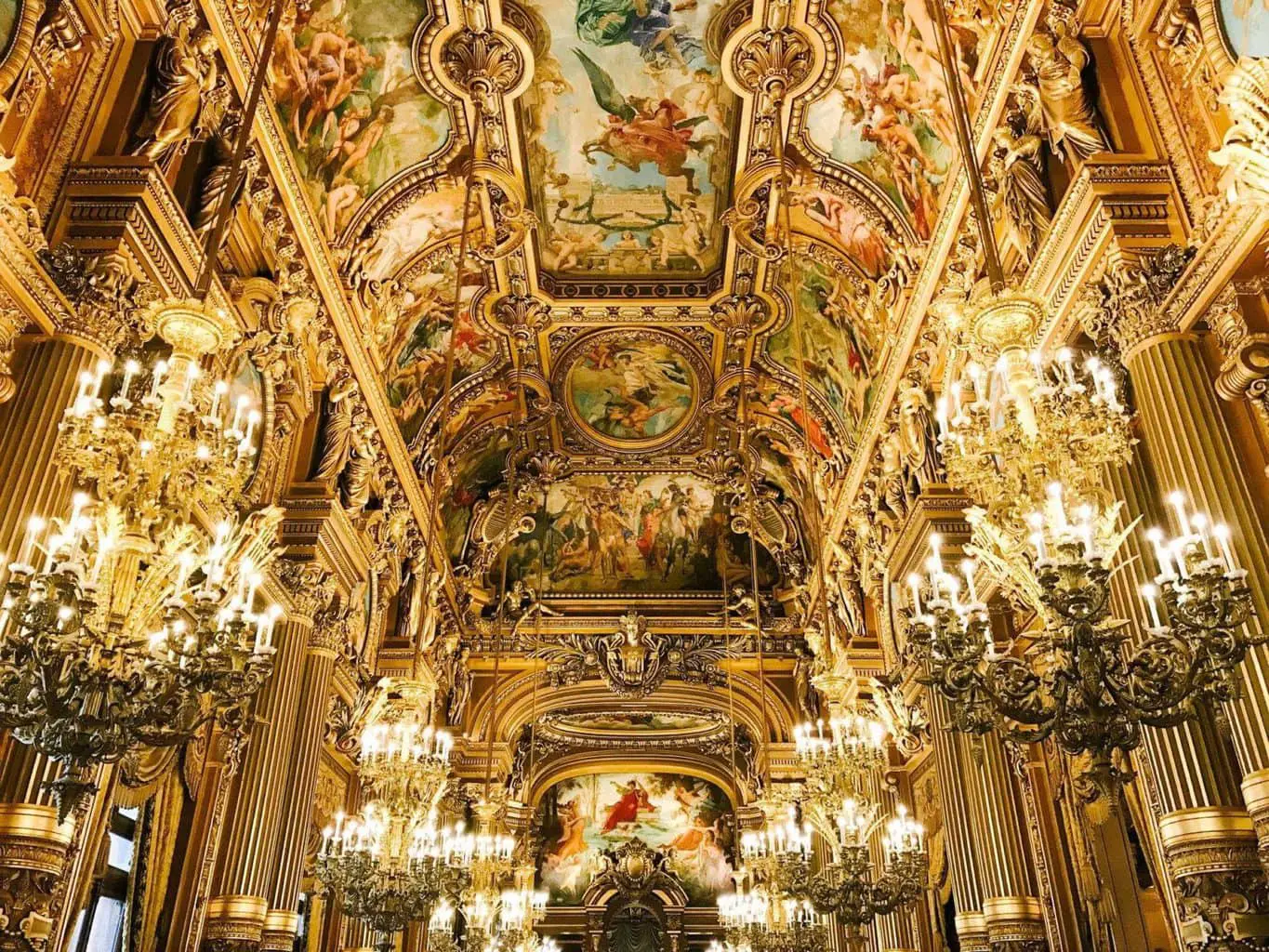
Explored by Marco from Travel-Boo
Unquestionably grandiose, opulent and probably one of the most beautiful buildings I’ve ever stepped foot inside, the Palais Garnier, Paris’s iconic and world-famous Opera House, is one of the city’s most iconic symbols.
Built between 1861 to 1875 to house the Paris Opera, this stunning landmark is as impressive inside as it is from the exterior. Add to this the fact that it was also the setting that Gaston Leroux used to set the stage for his now infamous Phantom of the Opera in 1910, it’s no wonder this striking and beautiful Palace is adored by so many.
We were absolutely blown away by the intricate detail of the interiors, all the way from the staircase and leading up to and into the actual theatre itself, just gorgeous.
Today, the 1979-seater Opera House plays host mainly to ballet performances by the Paris Opera Ballet. The Palace is also open almost daily for self-guided or guided tours, which I would highly recommend if you’re planning a trip to Paris.
Tip: Be sure to consult the Opera de Paris website and check the schedule ahead of any visit as they do have exceptions and dates when they are closed to the public.
Château de Fontainebleau, Fontainebleau
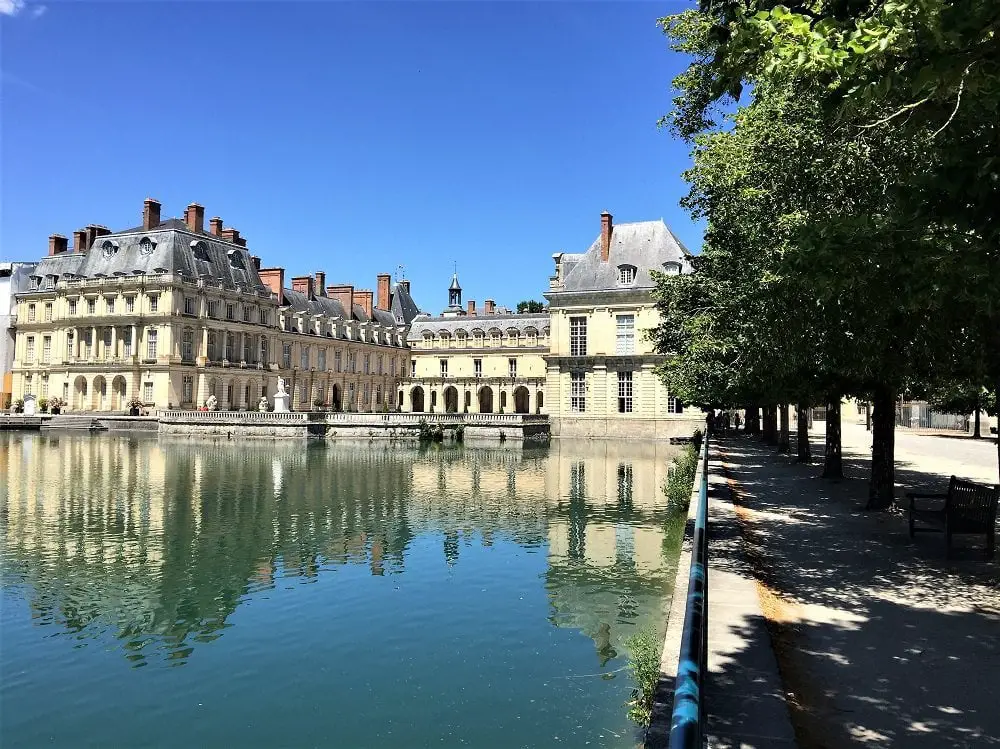
Explored by Michelle from That Texas Couple
There are so many iconic places in France that it is hard to choose exactly which ones you are going to visit. While most people make their way to Versailles, what if I told you there were another iconic chateau in France that is less crowded but just as fabulous? Well, there is, and that place is Château de Fontainebleau.
There are so many reasons that you should visit Chateau de Fontainebleau, one of which is its proximity to Paris. Hop on the Ligne 1 from Paris and you will be there in no time!
Château de Fontainebleau has been home to the Royal Families of France for ruling families for centuries. During your time here, be sure to take an epic Instagram photograph in front of the famous horseshoe shaped staircase before touring the fabulous Château. During your tour you will have the opportunity to see not only Napoleon’s throne, but also Marie Antoinette’s bed. In addition, there are also 3 historic chapels, four museums, a theatre, and countless galleries.
After you complete your tour of the palace, make your way outside to roam around the fabulous gardens of Château de Fontainebleau, the perfect place to have a romantic picnic to end your day.
Notre-Dame de la Garde, Marseilles
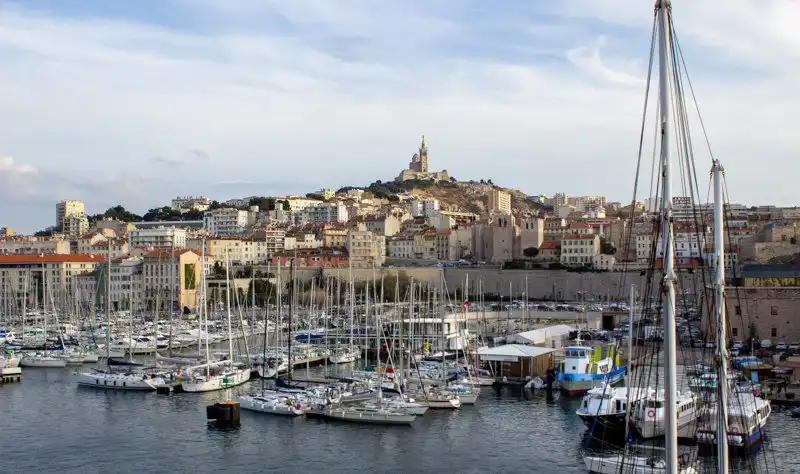
Explored by Alexei of Travel Lexx
Marseille doesn’t immediately spring to mind when thinking of iconic French destinations. However, France’s second largest city is full of reasons to visit. One of them is the stunning Notre-Dame de la Garde, Marseille’s most famous landmark. The 19th century basilica, built on the remains of a 16th century fort, occupies a prime spot perched 160 metres above the city.
The church façade is impressive enough, but make sure to wander inside. Marvel at the colourful mosaics on the ceiling and walls of the main church (you may have to crane your neck to admire the cupola!) and stick around for a service to hear some of the beautiful singing. Under the main church is a crypt with statues and side chapels. The bell tower is adorned with a huge gold-plated statue of Madonna and Child.
Notre-Dame de la Garde is a symbol of Marseille and locals even believe that the church protects their city. It’s just a bus ride (no. 60) away from the bustling Vieux Port but a 1km walk through quaint neighbourhoods from the port or Castellane station is a great way to arrive. The stunning 360-degree views of Marseille are well worth the climb alone.
Recommended: Interested in landmarks? Why not check out what made the list of the most iconic landmarks in England.
Palais des Papes, Avignon
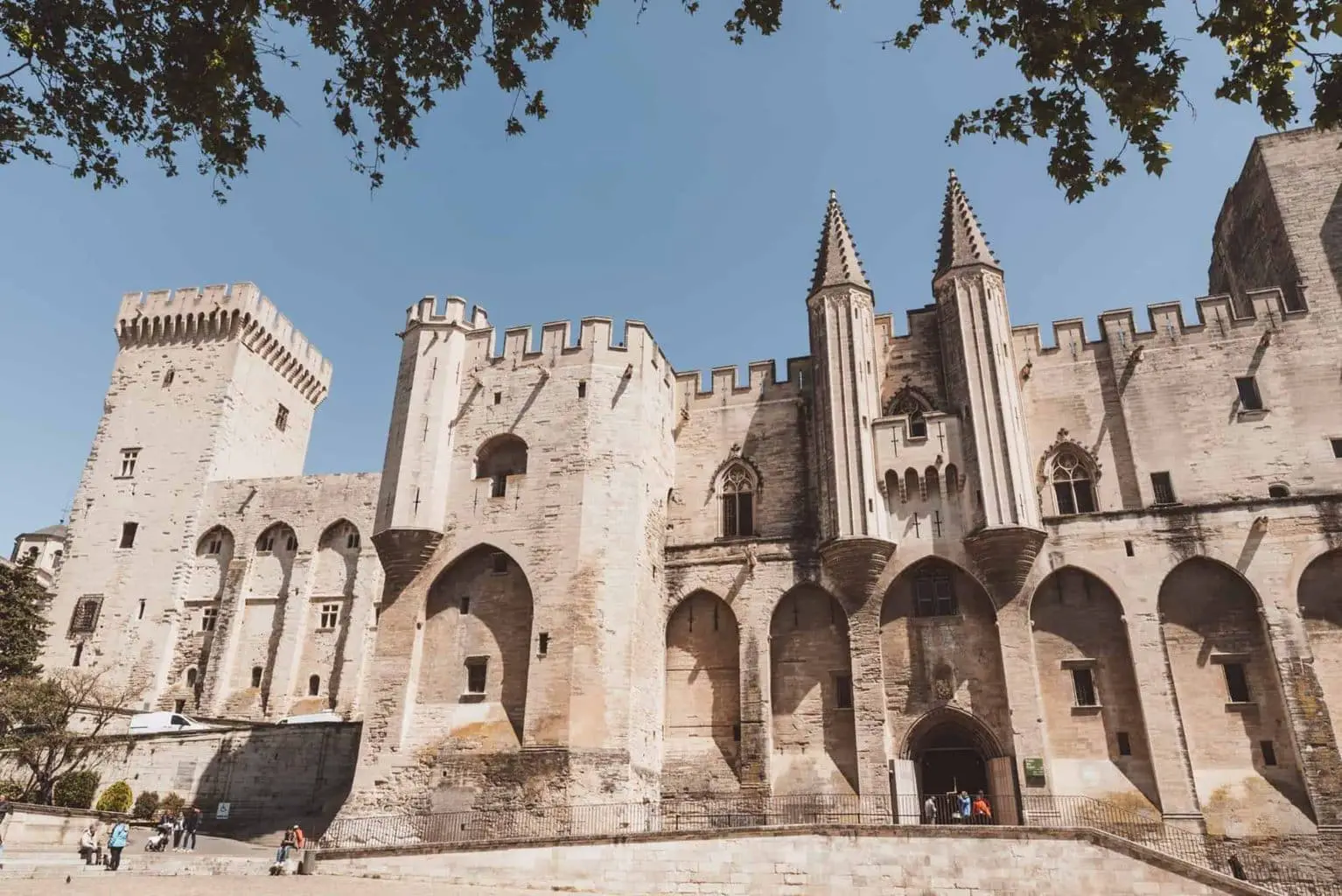
Explored by Nadine from Le Long Weekend
The most iconic building in Avignon, if not the whole of Provence, is the stately Palais des Papes. Rising up above the terracotta rooftops of Avignon’s historic city centre, it’s a sight to behold.
Construction of the palace started in the 13th century under the rule of Pope Benedict XII, and each successive Pope left his mark on the ever-expanding medieval building. Touring the grand halls and rooms of the interior is by far one of the most interesting things to do in Avignon.
As part of your admission ticket, you’ll be given a Histopad which brings the barren rooms to life with interactive illustrations of how they would have looked in the palace’s heyday. The tour is divided into two loops, and you will need at least an hour to take it all in properly.
Afterwards, head up to the rooftop terrace where you’ll find some of the best views over Avignon and the Rhône River, and a café to relax into. Tickets are available online or at the door – just be sure to buy the combined ticket that will also allow you admission to the Pont d’Avignon.
Cathédrale Notre Dame de Strasbourg, Strasbourg
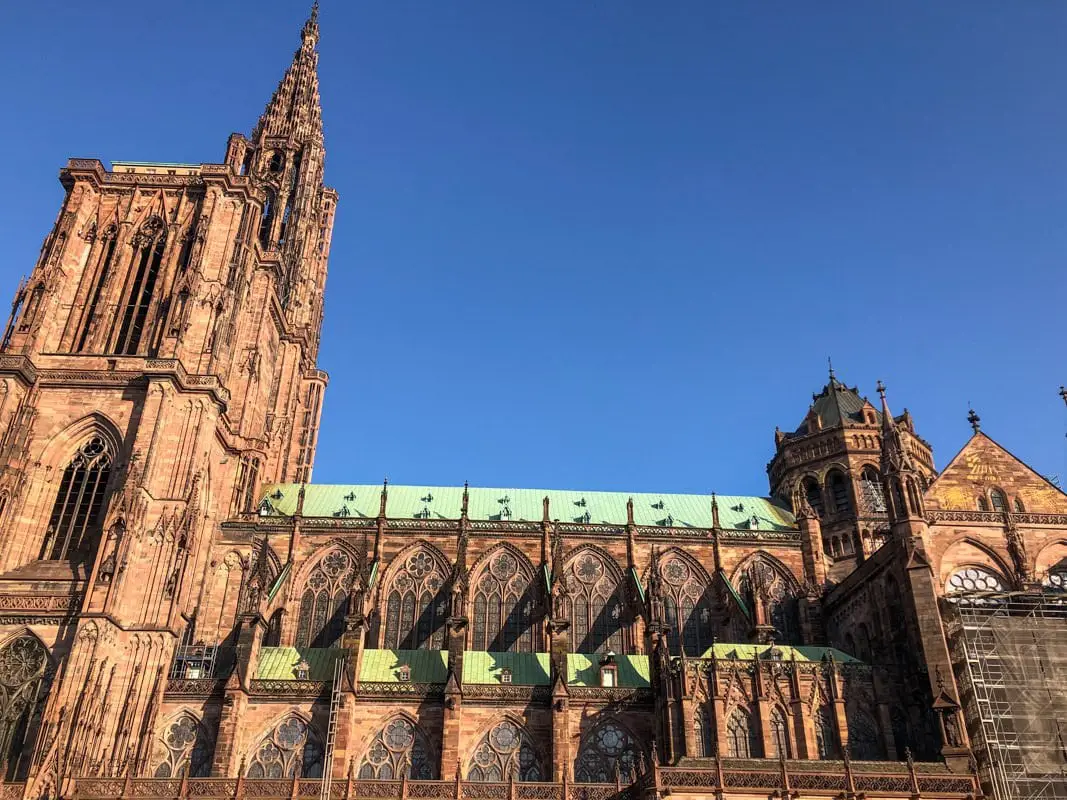
Explored by Arzo from Arzo’s Travels
One of Strasbourg´s main tourist attractions is the stunning Cathédrale Notre Dame de Strasbourg.
The cathedral, completed in 1439, is one of the most important monuments from the Middle Ages that still exists.
The Catholic church can be seen from afar – rumors say, you can even see it from Germany (which is quite close, but it still sounds impressive, does it not?!). With a height of 142 meters it used to be the tallest building in the world – for more than 200 years and it is still one of the tallest churches in the world.
You can visit the cathedral and admire the interior, but you can also climb the tower and enjoy a view of Strasbourg from the top – all you have to do is to climb the 332 steps to the top of the platform. On clear days you can really see the Black Forest in Germany.
Whether you climb the steps or want to visit the Cathedral- you need to buy tickets (tickets are around 4€ for adults). There is also an Astromomical Clock that you can visit and (from Monday through Saturday) – so make sure to add this Gothic masterpiece to your list of French landmarks to visit!
Roman Theatre, Orange
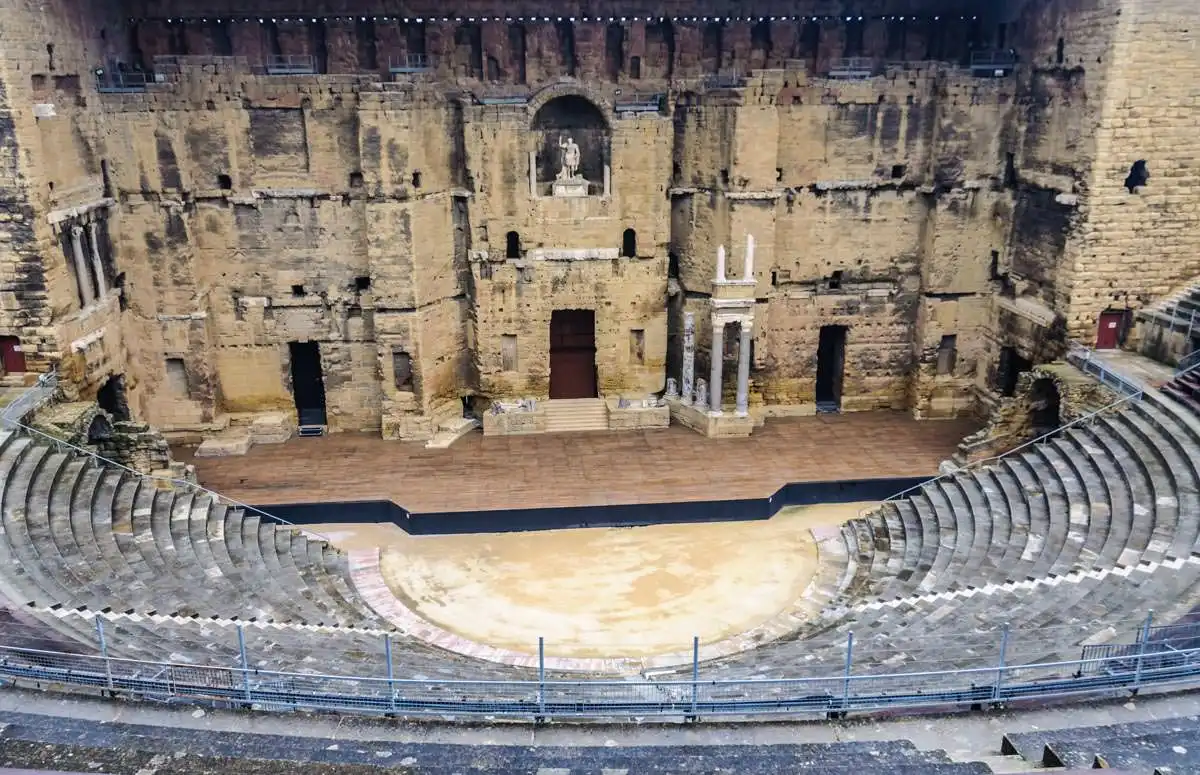
Explored by Gábor from Surfing the Planet
Amongst the Roman theatres you can visit in Europe, the most special you will find in Southern France, more specifically in the city of Orange. This small town in the Provence Region is famous mainly for its Roman heritage, since there’s also an arc of triumph there, apart from the best-conserved Roman theatre in Europe.
The theatre was built in the 1st century, during the reign of Augustus, the first emperor. The main feature of the construction is the stage wall, which is more than 30 meters tall with a large statue of the emperor itself present. The stage wall has been destroyed in most other roman theatres around the world. It’s worth climbing the stairs to the top of the stands and looking down on the huge amphitheatre, where once large spectacles were held.
Although the theatre was seriously damaged and vandalized in the middle ages, it remains in excellent condition, and even nowadays you can take in an opera and rock concert performance every now and then. In the chambers you can check out a nice exhibition about the most famous artists who have held concerts there.
Basilica of Notre Dame de Fourviere, Lyon
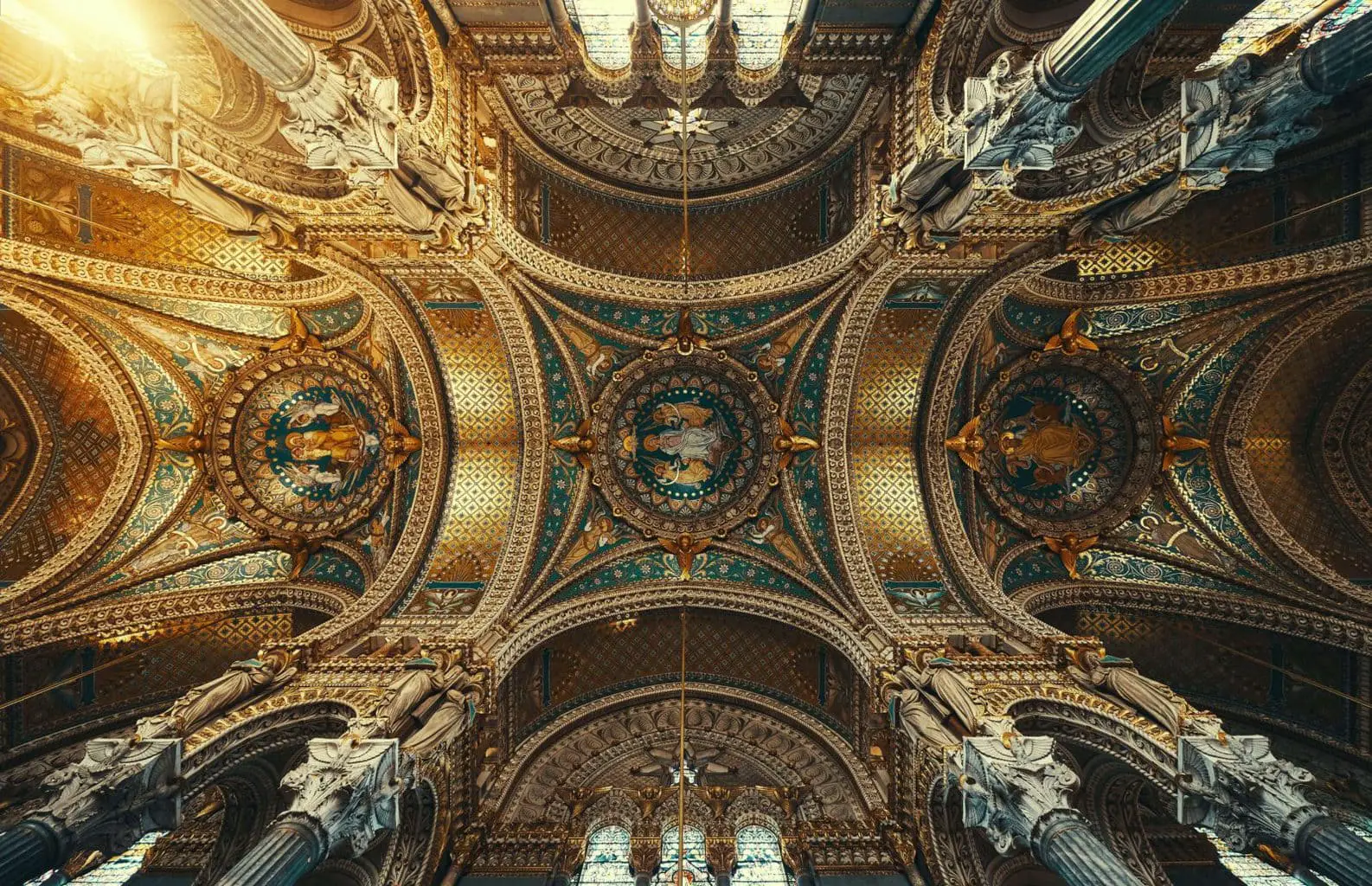
Explored by Stella Jane from Around the World in 24 Hours
The Basilica of Notre Dame de Fourviere in Lyon is one of the most noticeable attractions in the city. It looks very old, but it actually only dates back to the 19th century. The Basilica is dedicated to the Virgin Mary, who is venerated in Lyon because people believe she saved the city from a plague in the 1600s. One of the reasons it’s special is that all the paintings inside Notre Dame de Fourviere are related to the Virgin Mary.
The Basilica is located on Fourviere Hill, but the word hill is something of a misnomer. The walk from Lyon’s Old Town to the top of Fourviere Hill is quite difficult. Fortunately, there is a funicular that goes from Vieux Lyon to the top of the hill where the Basilica will be waiting for you. Inside you’ll find stunning works of art. Keep an eye out for the statue of Wisdom with the proverb “Listen, for I have trustworthy things to say. I open my lips to speak what is right” inscribed at the top.
The Basilica itself is lovely, but the best reason to venture to the top of the hill is that you can see the most amazing views of the entire city of Lyon from the viewing area behind the Basilica. You’ll be able to see the entire Old Town, as well as both the Rhone and the Saone rivers that famously run through the city.
Normandy American Cemetery, Colleville-sur-Mer

Explored by Stephanie from History Fangirl
While there are many beautiful and important landmarks in France, one of the most emotional experiences I’ve ever had in the country was during my visit to the Normandy American Cemetery in Colleville-sur-Mer. One of a number of important D-Day and Operation Overlord related sites one should visit in the area, I found myself overcome with tears during the majority of my visit.
Here there are nearly 11,000 graves and memorials to Americans who died during the operation to take back northern France from the Nazis during World War II.
The iconic white crosses and other religious insignia help cement how real the sacrifices made here were. I was particularly touched by the grave of a young soldier from Oklahoma, who’s widow visited every year on the anniversary of D-Day for over seventy years, until she became unable to travel. Stories like this bring home the human toll of the war.
Give yourself at least two hours to explore, witness, and meditate at this important site.
Sainte-Chapelle, Paris
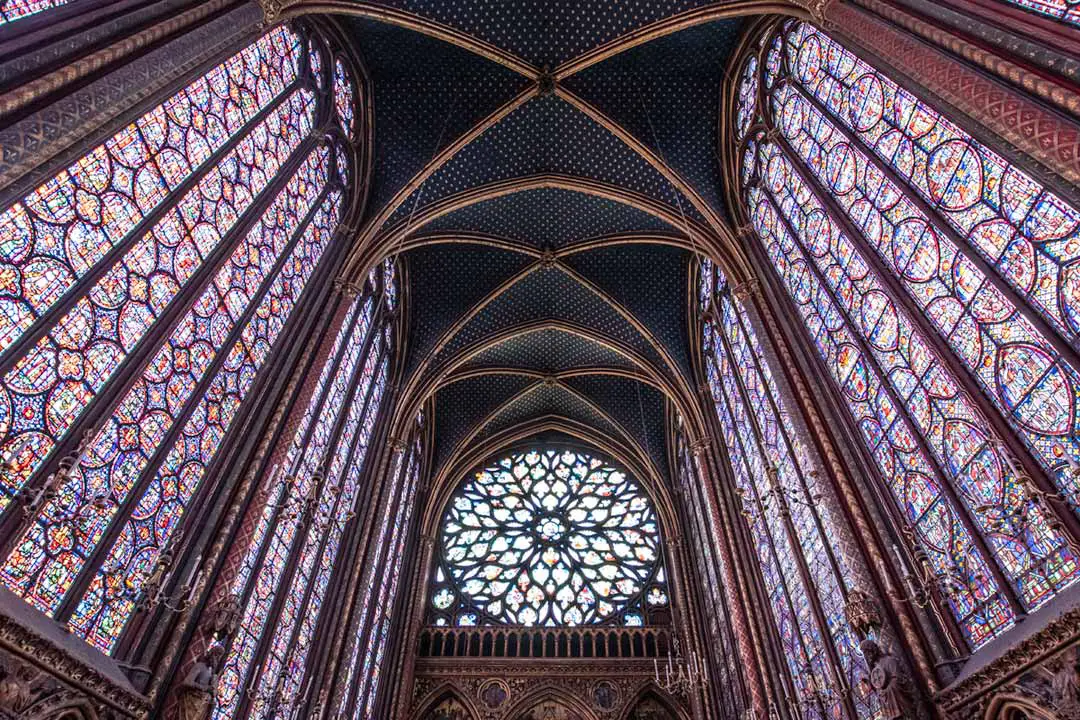
Explored by Slavi from Global Castaway
A country blessed with world-famous monuments such as Sacré–Cœur, Mont Saint Michel Abbey, and of course, the legendary Notre Dame in Paris, is like the biggest mecca of Christian temples in the world.
But do you know which is the most beautiful of them all? The 13th-century Sainte-Chapelle used to be the royal chapel within the medieval Palais de la Cité. Being commissioned by Louis IX of France, the purpose of Sainte-Chapelle was to house the king’s extraordinary collection of religious artefacts.
Today, the middle-aged gothic church is famous not so much for its artefacts but extensive beauty. The 15 fine-crafted, 15 meters high, stained-glassed windows, complemented by the extraordinary rose window, are something that would definitely drop your jaw to the floor.
The glass panes are not just visually pleasing. If you take a closer look, you will find out they depict 1,113 scenes from the bible and show the history of the objects the chapel holds.
To get the best experience of Sainte-Chapelle, you need to do a little preparation. There are year-round queues in front of it, making the skip-the-line ticket an absolute must here. You’re not only going to save time by cutting the ticket queue, but you’ll also get a fast entrance through the security line.
Moulin Rouge Theatre, Paris
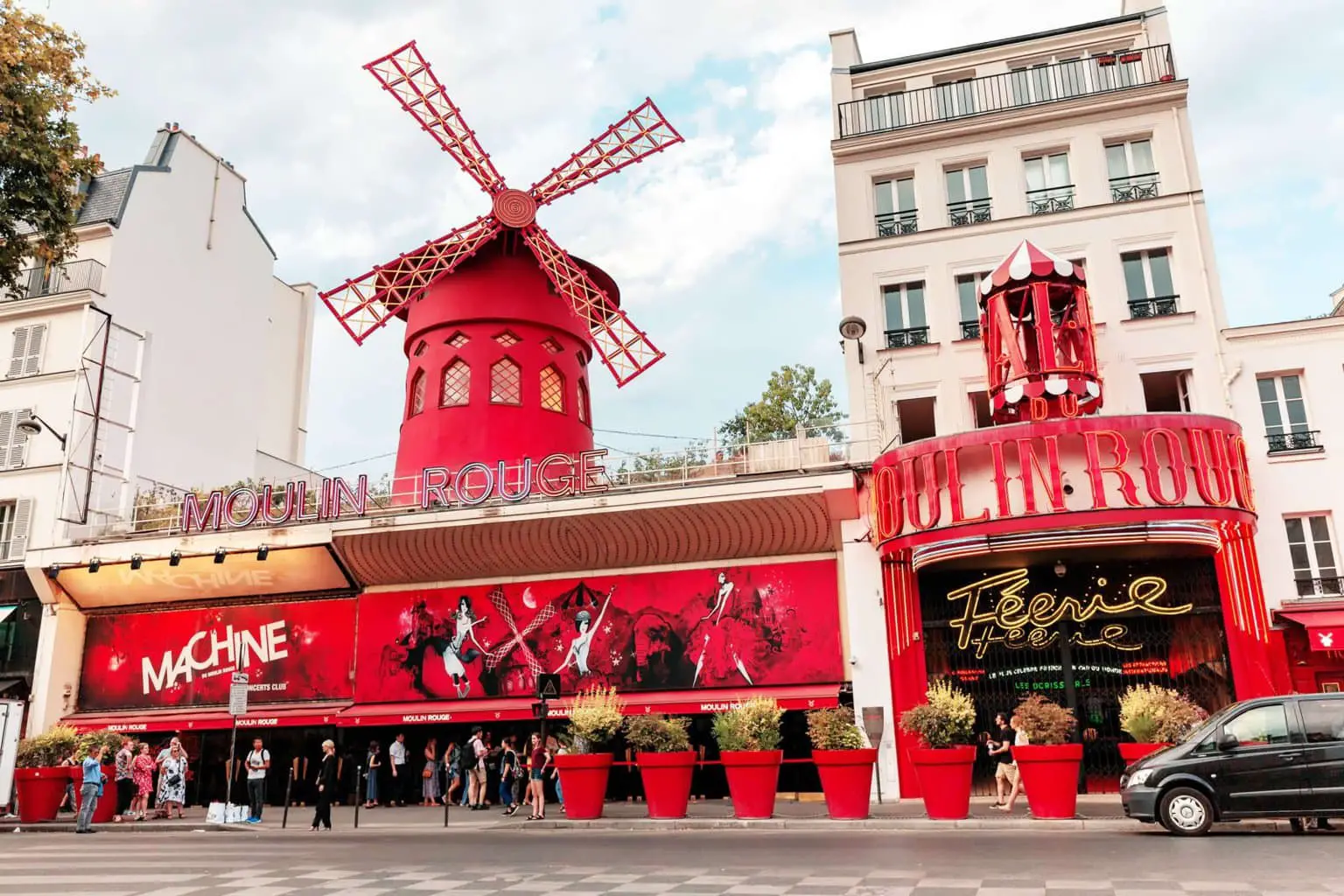
Explored by Lesley from Freedom56 Travel
One of the most iconic and recognizable buildings in France is the Moulin Rouge Theatre.
Located on the border of Montmartre, the Moulin Rouge is known for its distinctive red windmill on the roof. Originally built in 1889 and re-built after a fire destroyed it in 1915, the Moulin Rouge is known the world over as the birthplace of the can-can as well as the first cabaret form of entertainment.
The Moulin Rouge Theatre was built in the height of the Belle Epoque in Paris, a time when the arts were being celebrated and the area around the Moulin Rouge was populated by artists of all kinds.
One of those artists was Henri de Toulouse-Lautrec, and it was his famous posters of the Moulin Rouge that helped to propel it to world-wide popularity.
The Moulin Rouge Theatre looks little different today than it did 100 years ago, and it recently celebrated its 125th anniversary. A new stage adaptation of the 2001 Baz Luhrmann film Moulin Rouge! Is now being staged on Broadway.
The Moulin Rouge Theatre continues to stage cabaret shows twice nightly and the shows are as popular as ever with both visitors and Parisians.
Cathedral of Notre Dame, Reims
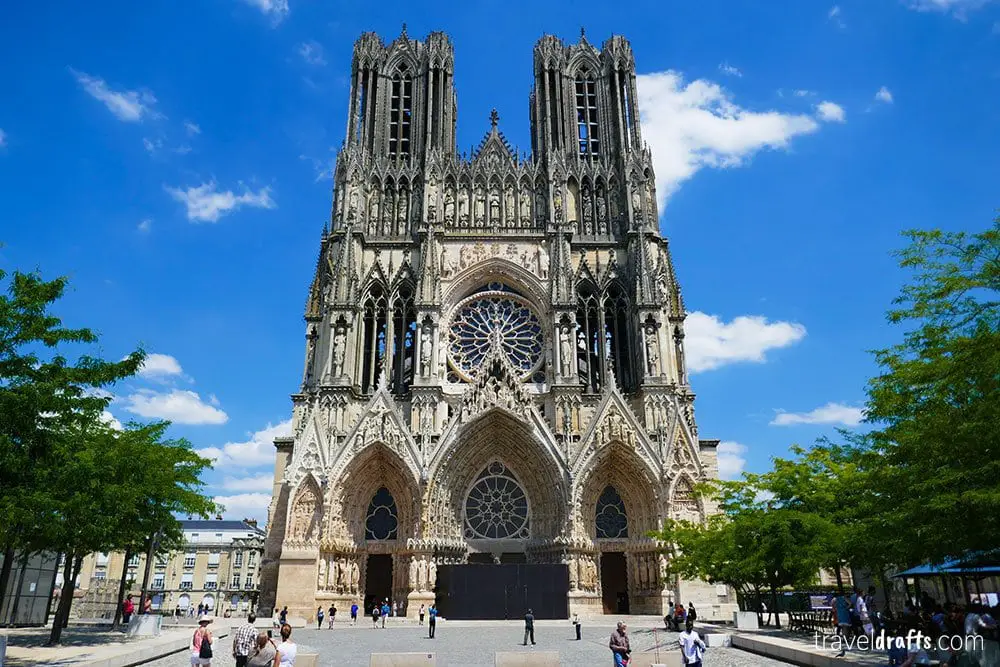
Explored by Jorge and Cláudia from Travel Drafts
The Cathedral of Notre Dame of Reims is one of the most important cathedrals in France, as it was the site of the coronation of the French Kings. Thirty kings were coronated in the Cathedral, and one of the most emblematic coronations was King Charles VII, which Joan of Arc assisted.
The cathedral is classified as a UNESCO World Heritage site, along with the Palace of Tau and the Abbey of Saint Remi. Besides its historical importance, it is also a very beautiful cathedral. It is filled with stained glass windows with a big rose window over the main portal. When the sun reflects on the windows, the cathedral glows with different colours. The cathedral even has a more recent stained glass window designed by Marc Chagall.
From the outside, the cathedral is huge and full of sculpted figures that will capture your eye. In front of the cathedral, there is a statue of Joan of Arc on a horse in her honour.
The Cathedral of Reims is easily accessible by car and public transportation and it is only 129 km distance from Paris, so it can easily be done as a day trip from Paris.
Sacré-Cœur, Paris
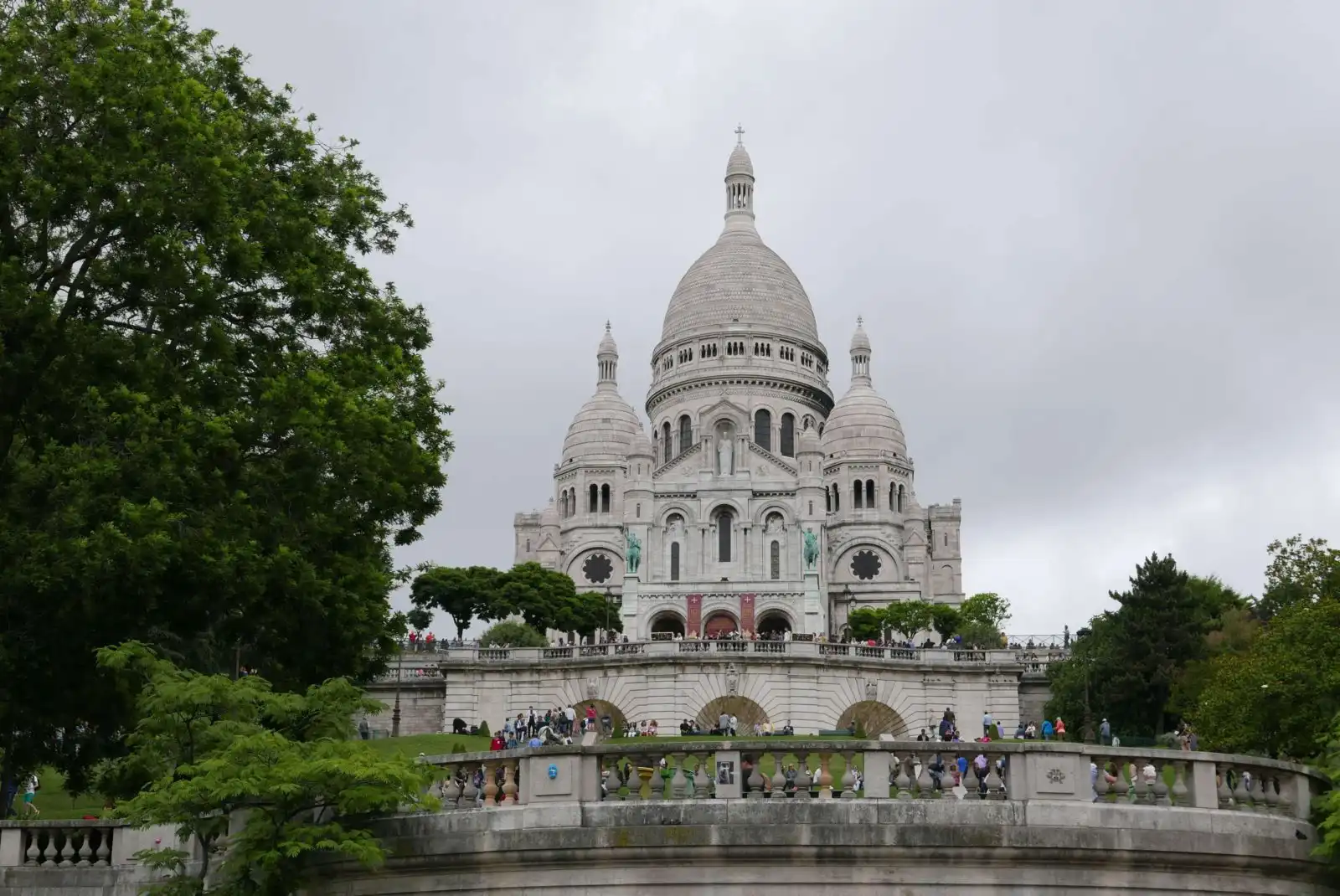
Explored by Kenny from Knycx Journeying
In French, “Mont” means a mountain. Montmartre, in that sense, is a large hill in Paris. There is a giant white Basilica standing on top of the hill and the silhouette of the architecture can be seen in a lot of places in the city – this is the famous Basilica of the Sacré-Cœur.
Compared with a lot of historic buildings in Paris, the basilica is actually quite new. The Roman Catholic church started construction as a political and cultural monument of the adoration of the Holy Eucharist; it was officially completed in 1914, 25 years later than the completion of the Eiffel Tower.
Montmartre is only 130 meters high, and it’s fairly accessible to worldwide tourists to reach the open space right in front of the Basilica. Take a short walk up the staircase or ride the funicular, this is one of my favorite viewpoints due to the direction of where the church is facing. Tourists could enjoy a panoramic view from the Eiffel Tower to Notre Dame and beyond.
Mont Blanc, Haute-Savoie

Explored by Lee from The Travel Scribes
More than just the name of the luxury pen company, Mont Blanc is one of the most recognizable landmarks in France, and probably one of the most famous mountains in the world.
It’s the highest mountain in the Alps (and in Europe west of Russia), rising 4,808 metres above sea level.
Its name translates as ‘White Mountain’, because it’s always snowy up top, with the summit covered in a permanent layer of ice and snow.
The mountain offers more than just incredible beauty: it’s a place for keen hikers and skiers to spend some time outdoors. Actually about 20, 000 people climb it’s slopes each year! If you’re not a keen hiker, don’t worry. You can just take the cable car up the top, which gives you sweeping views of the alpine range.
Have we missed any key landmarks off French landmarks list? Do get in touch or give us all the information in the comments!
Also, if you’re looking for more landmark lists in other countries, head over to our articles on iconic places in Australia, China, Thailand, Germany London and many others here.
Want to save this for later? Then why not pin it..


